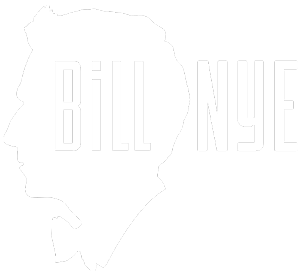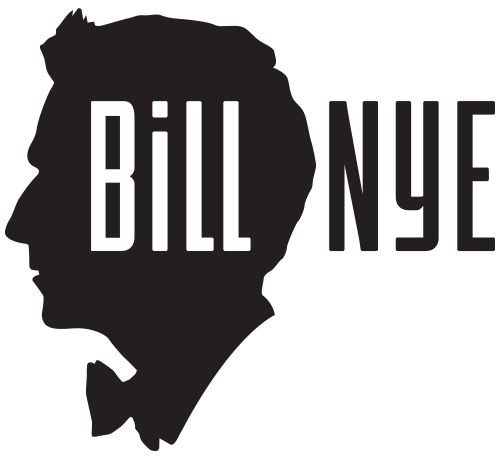Volcanos
It’s the “Volcanoes” episode, and Bill Nye the Science Guy is bubbling over with excitement.
Volcanoes are mountains made from molten rock. The Earth’s crust is divided into big slabs, called plates, which are slowly moving all the time. The plates are floating on the Earth’s mantle, a layer of gooey hot rock that flows like maple syrup. Some places in the mantle, the rock gets very hot and nearly liquid. It’s called magma. Sometimes the magma reaches the Earth’s surface and forms a volcano.
Three basic types of volcano are “shield”, “cinder-cone”, and “stratacone”. Shield volcanoes are low or almost flat, which makes them look like a big shield. They erupt rivers of red-hot lava that run down their flanks or sides. Cinder-cone volcanoes erupt with rocks, cinders and fine particles of ash. These volcanoes look tall and usually have flat tops. Stratacone volcanoes are shaped like a cone, and they alternate between spewing ash and spewing lava.
Volcanoes erupt ash and lava when pressure builds up inside. Hot ash and lava are ejected from volcanoes, sometimes traveling thousands of kilometers away before settling back on the ground or at sea. When the ash and lava cool, the new rock layer makes the Earth a little bit thicker there.
The “Volcanoes” episode explodes with science!
The Big Ideas
- Volcanoes are mountains formed by hot melted rock from inside the Earth.
- Volcanoes build up the Earth’s surface.
- There are different types of volcanoes.
Did You Know That?
- There are about 1,343 active volcanoes on Earth?
- The longest lava flow we’ve seen so far was caused by Laki, a volcano in Iceland? The flow measured 69 kilometers (43 miles) long.
- About 50 volcanoes erupt every year?
Books of Science!
- “Volcanoes” by David Lambert. Published by Franklin Watts, 1985.
- “Volcanoes: The Fiery Mountains” by Margaret Poynter. Published by Julian Messner, 1980.


